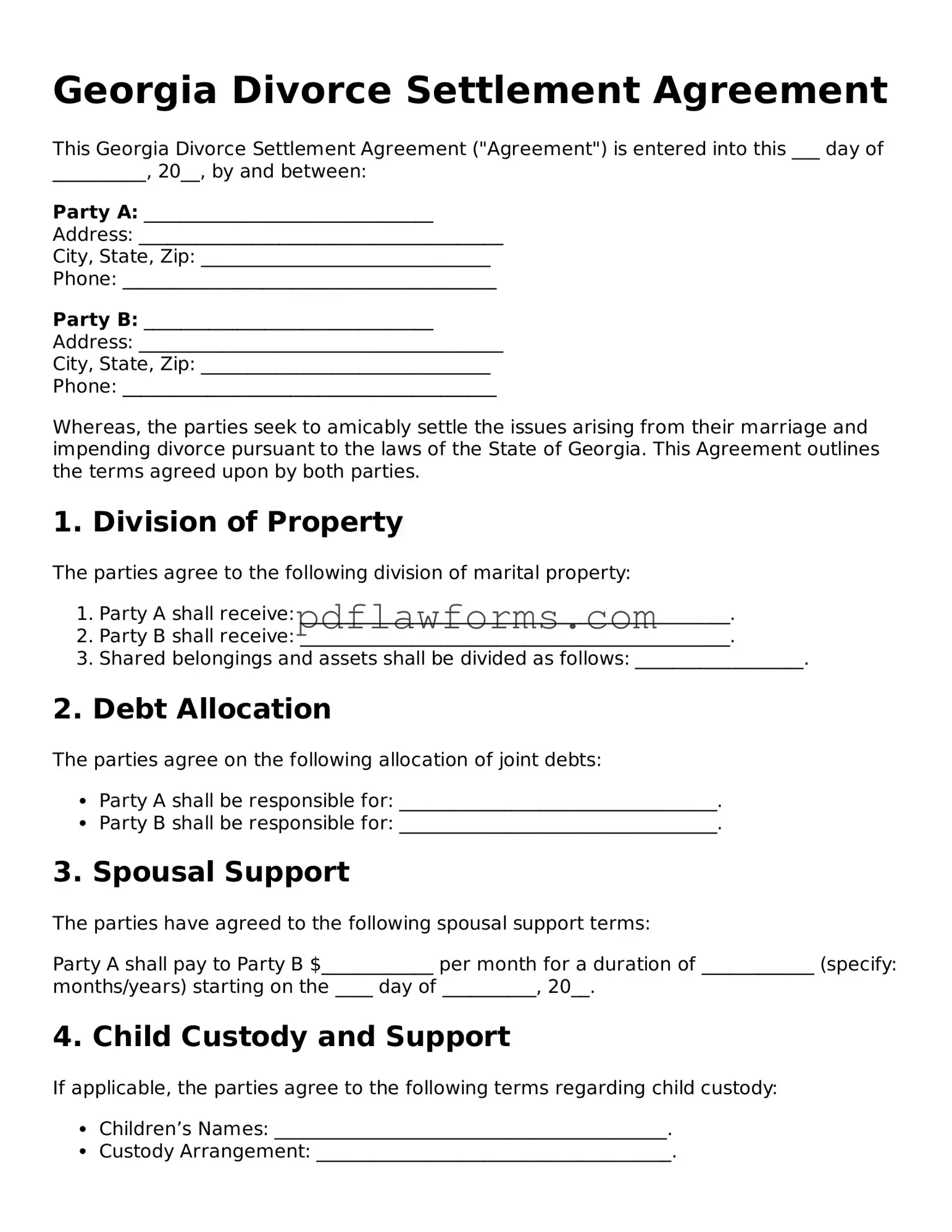Filling out the Georgia Divorce Settlement Agreement form is a significant step in the divorce process. However, many individuals make common mistakes that can lead to delays or complications. Understanding these pitfalls can help ensure a smoother experience.
One frequent error is failing to provide complete and accurate information. Each section of the form must be filled out thoroughly. Incomplete forms may lead to the court rejecting the submission, causing unnecessary delays. It is essential to double-check all entries for accuracy.
Another mistake is overlooking the importance of financial disclosures. Parties must fully disclose their assets and debts. Incomplete or misleading information can result in legal consequences, including potential claims of fraud. Transparency is crucial in these proceedings.
Some individuals forget to address child custody and support arrangements. Even if both parties agree on these matters, they must be explicitly stated in the agreement. Failing to include these details can lead to misunderstandings and disputes in the future.
Additionally, people often neglect to consider tax implications. Divorce can have significant financial consequences, including taxes on property transfers or alimony. Consulting a financial advisor can help clarify these issues and prevent future surprises.
Another common mistake is not reviewing state-specific laws. Divorce laws can vary by state, and Georgia has its own requirements. Familiarizing oneself with these laws can ensure that all necessary provisions are included in the agreement.
Some individuals make the error of not seeking legal advice. While it is possible to fill out the form independently, consulting with a lawyer can provide valuable insights. A legal expert can help identify potential issues and ensure that the agreement is fair and enforceable.
People sometimes rush through the process, leading to mistakes. Taking the time to carefully review each section of the form is essential. A rushed approach can result in overlooked details that may cause complications later.
Another issue arises when parties do not communicate effectively. Open dialogue between both parties is crucial for a successful settlement. Misunderstandings can create unnecessary tension and lead to disputes that could have been avoided.
Finally, individuals may fail to keep copies of the completed form. It is vital to retain a copy for personal records. This documentation can be helpful for future reference or in case any disputes arise after the divorce is finalized.
By being aware of these common mistakes, individuals can navigate the Georgia Divorce Settlement Agreement process more effectively. Taking the time to carefully complete the form can lead to a smoother transition into the next chapter of life.
